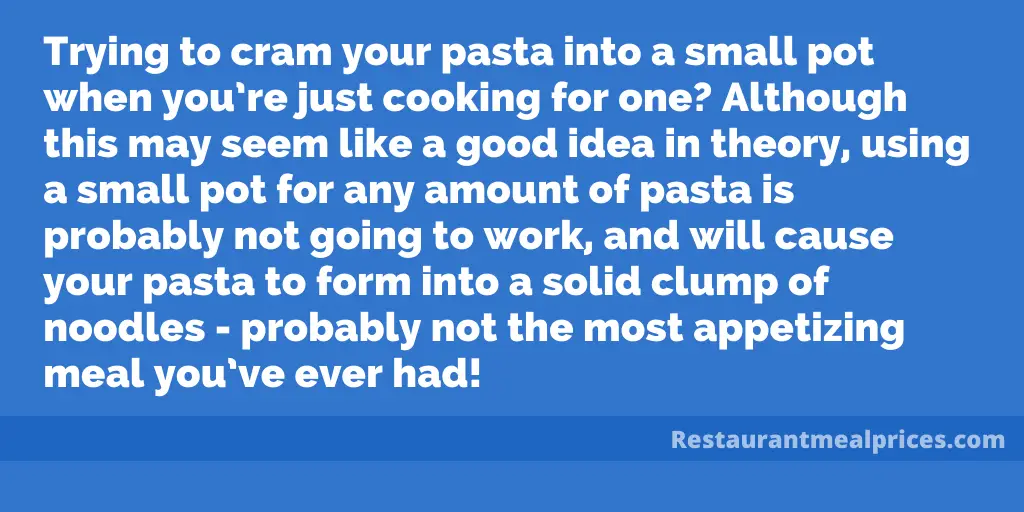Cooking the perfect pasta should be easy, right? After all, you’re just combining water and pasta, so how tricky can this equation be? Well, it turns out that there are a ton of factors that go into this simple math equation, and forgetting one can make your easy weekday dinner into a call for takeout (and in that case, we have dozens of food menus for you to take a look at!). In this article, we have assembled the best and easiest tips for cooking pasta right every time, so you can let go of your panic and enjoy some delicious Italian.
Use a large pot

Trying to cram your pasta into a small pot when you’re just cooking for one? Although this may seem like a good idea in theory, using a small pot for any amount of pasta is probably not going to work, and will cause your pasta to form into a solid clump of noodles – probably not the most appetizing meal you’ve ever had!
What’s Cooking America tells us more on why you need to use a large pot for cooking pasta:
“To cook perfect pasta you will need to use a lot of water. A too-small pot and too little water encourages the pasta to clump and stick together, thus cooking unevenly. For a pound (16 ounces) of pasta, you will want a pot that holds at least 5 or 6 quarts of water.”
Salt your water like the sea
A pinch of salt and you’re good to go, right? Most of us know that we technically need to salt your pasta while it’s still in the pot, but are concerned that we’re going to oversalt it. Odds are, you’re probably worrying in vain, as your pasta needs more than just a pinch to provide enough flavor to your noodles.
Chatelaine explains why you shouldn’t be afraid of oversalting your pasta:
“Salting the water is your only opportunity to season the pasta itself. The water needs to “taste like the sea,” in order to flavour the pasta. Three litres of water requires a minimum of 1 tbsp salt.”
Test the pasta two minutes before it’s “ready”
Cooking instructions on packages of pasta are an estimation at best, as they can depend on a variety of factors. Testing your pasta two minutes before it’s deemed to be “ready” is the best way to know for sure how much additional time (if any) to give your pasta.
Greatist.com tells us more about why you should take cooking times with a grain of salt when it comes to pasta.
“Check the pasta packaging for the cook times. This is where it gets tricky. Ever notice that the instructions give a range of time? For instance, regular dry spaghetti takes between 6 to 8 minutes. Or is that 5 to 7 minutes? Or 10 to 12? Depends on the package and the pasta. (If you’re cooking at high altitude, that adds yet another variable.) Start checking the pasta’s doneness on the earlier range of the time frame. Fish out a single strand of pasta using a pasta fork (or whatever — we find a pair of chopsticks is perfect). Let it cool, then bite into it.”
Don’t feel like cooking tonight? No problem! Have a look at all restaurants to find your favorite perfectly cooked pasta.

